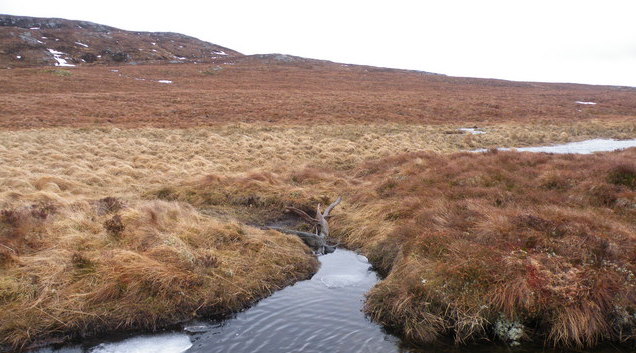One approach to ‘writing what you know’ is to learn it. Sarah-Jane McKenna did exactly that in writing her debut novel, Dreaming in Irish. McKenna spoke with Origenes about the idea for that story in a previous article, but we wanted to hear about her research, too.
The story spans the generations of one Irish family. Set largely in New York City, the main character, Kate, finds a table with a St. Brigid’s cross on top and, inside a drawer, a number of letters – written in a mixture of Gaelic and English. She soon sets out to discover who wrote these letters and how they ended up inside this little table in her mother’s basement.
The Bogwood Table
Back in the real world, McKenna needed to learn about 19th century furniture from Ireland. To find out the story of this sort of table, she traveled to Dublin and visited a number of antique shops on Francis Street, an area known for such stores. This wasn’t her first time in Ireland: she did a graduate degree there and knows the city well. Her familiarity with Dublin helped her to ask the right questions and speak the lingo.
“Everybody was helpful, but I really hit the jackpot with Fennelly Antiques.The owner there taught me about campaign furniture and bog-wood.” Bog-wood is made from felled trees that have begun to fossilize in bog waters; it’s especially hard and only found in certain parts of the world, including Ireland. Campaign furniture was historically used during military campaigns, as it was designed for travel and thus easy to take apart. This tied in well with Kate’s ancestors’ immigration to the United States: they brought the table Kate finds over in pieces.
In many instances, what the character Kate learns about her family’s history while researching the history of the table, McKenna learned doing the research for the book. That’s also true about the Brooklyn Bridge. The bridge is so emblematic of the novel’s larger story that it’s featured on the book’s cover. “The bridge looms large, but I knew little about its construction. So that was a big research project: not only its physical construction, but also the people who built it.”
The Bridge
McKenna discovered that the work force was composed largely of Irish immigrants, and used that to her advantage. In the novel, Kate discovers that her family line includes men who worked on the construction of the bridge.
 McKenna was particularly struck by the story of Washington Roebling, the civil engineer who directed construction of the bridge and his wife Emily, who took the reins once he got too sick to continue working. “The staff at the Brooklyn Historical Society provided me with the information I wanted on the house that Washington and Emily Roebling lived in while they oversaw construction of the bridge.”
McKenna was particularly struck by the story of Washington Roebling, the civil engineer who directed construction of the bridge and his wife Emily, who took the reins once he got too sick to continue working. “The staff at the Brooklyn Historical Society provided me with the information I wanted on the house that Washington and Emily Roebling lived in while they oversaw construction of the bridge.”
It was from their Columbia Heights home that Washington Roebling would look out at the bridge after he became too sick to oversee construction on-site. This house, too, becomes a part of Kate’s story, and the reader gets to learn about it through her eyes.
Further research included reading the David McCullough book The Great Bridge,and speaking to many Irish historical societies.
Keeping Track of the Research
McKenna, who is used to writing non-fiction books for her day job, found that all this research was easy to keep track of in comparison to writing a research book with footnotes. For this, she got to create her own story, and she had a great time doing it.
“The story’s ancestral research serves as a vehicle for Kate to recognize how central family will be in her new life,” said the author, speaking of a painful chapter in Kate’s life and how she uses her family history and shared pain to keep going. “Like that first family in their tree to come to Brooklyn, they’ll carry on by having the grace to let in the love and support of those around them.”




Social